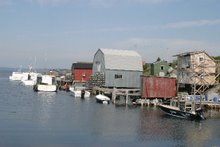Saturday, March 3, 2007
'No water, no birds, no tourists'
Bharatpur - For years, tourists have come to India's Keoladeo Ghana National Park to gaze at shimmering, bird-flocked wetlands stretching to the horizon.But where there were once vast lakes, visitors now find puddles nursed by a network of stuttering diesel-fuelled pumps, which suck up groundwater from deep beneath the parched earth.Years of poor monsoon rains have left most of this World Heritage site near Bharatpur in the desert state of Rajasthan dry and cracked, while local farmers insist on getting most of what little rain water is dammed to irrigate their fields.This has forced most of the thousands of migratory birds that would once spectacularly descend on Keoladeo every year for the winter to make alternative arrangements elsewhere."Before, the skies were so full of birds it was a wonder they didn't collide into each other," recalled Mahendra Vyas, a lawyer who advises India's Supreme Court on conservation issues."Now there is nothing there," he added.Although the park has not yet been added to the United Nation's danger list, the World Heritage committee warned in 2005 that if the park continues to dry up then it risks losing its status as a World Heritage site."The situation is not good and the prognosis for the future also doesn't appear to be very encouraging," Kishore Rao, the deputy director of the United Nation's World Heritage Centre, told Reuters by telephone from his Paris office."Delisting has not happened before but that doesn't mean it won't happen in the future," said Rao.When India succeeded in getting Keoladeo listed as a World Heritage site in 1985, it promised to look after the unique wetlands for the benefit of humanity.But word is spreading, especially on travel websites, that India is failing in that undertaking. As a result, visitors are showing up in ever smaller numbers, locals say.February should be a busy month at the height of the tourist season; but most of the men dozing on their cycle-rickshaws at the park gates are lucky these days to get hired."No water, no birds, no tourists," complained Rampal Singh, who says he and his fellow rickshaw drivers are struggling on their reduced earnings. Hoteliers also say bookings are down.Inside the park, a handful of foreign tourists cluster around the edge of the largest stretch of pumped water, binoculars trained on kingfishers and other resident birds.Their disappointment at the mostly empty skies increased in proportion to the size and cost of their bird-spotting gear.German tourist Franziska Freitag, who had stopped off at the park between visits to the nearby Taj Mahal and the famous pink city of Jaipur, said she was happy to have seen a python and some "very beautiful" owls.But Leif Jonasson, who had lugged several thousand euros' worth of camera equipment from Sweden, said he was saddened to find that bleak reports of the park's deterioration were true."It's a pity to see these small puddles. They're like peas in an ocean," he said.Rajasthan's forestry department thinks the best solution is to top up the park with water piped in from the Chambal river, about 80km away, or from the Goverdhan floodwater drain, about 20km away.But that might not help much as an entire wetland ecosystem would have to be created - with fish, turtles and other aquatic life vital to wetland ecology - to establish a habitat for wintering cranes, storks and ibises who migrate to the region from as far as China and Siberia."Money is one of the other constraints," said Mehrotra, Rajasthan's chief wildlife warden. Neither pipeline has yet been approved.In the wheat fields behind the park lies Rajasthan's last, unsuccessful, attempt to bring a new water supply to the area: rusting sections of pipeline that have sat abandoned since 2004 because of legal wrangles with the contractor.In the meantime, the park must wait at the back of the queue for water from the Panchana Dam about 80km away.In 2004, police had to break up angry protests at the dam by farmers, who were enraged to learn the local government had opened sluice gates to release water into the park.Since then, no dam water has been released to the park, which critics say is due to the fact that, unlike birds, farmers can vote."They don't dare raise the sluice gates again because they fear violence," Rao Raja Rahuraj Singh told Reuters beneath the gaze of a portrait of his grandfather, the former maharajah of Bharatpur, who created the park in the 1850s to feed his passion for shooting ducks.The wetlands have now been dry long enough for new woodland species of trees to take root, despite frantic plucking of seedlings by park workers."It's deteriorating every year," said Sunayan Sharma, the director of the park, one of many people who believe that although the park could partially recover, each dry year leaves more permanent scars.
Subscribe to:
Post Comments (Atom)

1 comment:
Wow, just another affect region due to our continuously changing climates from industrialization, and global warming in this case. I find it sad that ecosystems like these have to suffer because of our negligence over the years and that this park might even lose its World Heritage Statues, which is unheard of. Nevertheless, as climates around the world continue to change, I would imagine other sites would be threatened, but hopefully not to the extents as this site.
Post a Comment